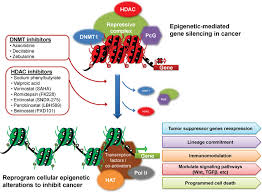BASIC ACCOUNTING CONCEPTS
Accounting is based on certain assumptions. These assumptions are known as basic accounting concepts. Those basic accounting concepts are as follows.
- Business entity concept : This concept states that the business and its owners are two separate and distinct entities. According to this concept, all transactions of the business have to be accounted for from the viewpoint of the business and not from the view point of its owners. The distinction between the business and its owners is essential in order to ascertain the true picture of a business. If the two are not separated for accounting purposes, the transactions of the busiess will be mixed up with the personal transactions of its owners and the true picture of the business can not obtained.
- Going concern concept : This concept implies that a business has an indefinite life and it exists for a long period of time. All business tranactions are performed and recorded from this point of view. The long- term expenditures such as the purchase of land, building and machinery that the business makes are recorded in books of account assuming that it will exist and run for a long period of time. Their costs and not the current resale values are recorded spreading over their estimated working lives. Therefore, the balance sheet always shows fixed assets at cost after subtracting the depreciation.
- Money measurement concept : This concept assumes that only those business tranactions which are measured and expressed in monetary terms have to be taken into account. It is so assumed because money provides a common measure for different goods, services, assets and liabilities. This concept also assumes that monetary units such as 'rupee' are stable units in value , but this assumption may not be true in reality. Therefore, in spite of a decrease in the purchasing power of money, accounting is performed assuming that the value of money is stable over time.
- Accounting period concept : The accounting period concept implies that for the purpose of reporting financial information, the whole life of the business is divided into imaginary time- intervals. Each time interval is called an accounting period which is normally of one year. In Nepal, it begins on the 1st of Shrawn every year and ends on the last day of Asad the next year. At the end of each accounting year, financial statements are drawn to ascertain the profit or loss and the financial position of the business, and are reported to their users such as owners, managers and creditors.
- Revenue concept-This concept is also called realization concept. The concept states that revenue is assumed to be earned when it is realized . According to the concept, revenue is realized when goods are transferred to the buyers and services are provided to the clients for cash, or for assets or in anticipation of realizing the value of sales on a future date. It is not necessary that the revenue must be realized in cash. Besides , revenue is earned in the period when it is realized. However, revenue realized is always net of goods returned from the customer and bad debts.
- Cost concept : This concept implies that the cost of anything such as a service or an asset is recognised when it is incurred and not when cash is paid for it. According to the concept, the cost is assumed to be incurred when the service or the asset is used to generate revenue . Besides, the concept assumes that the asset is taken into account at the cost of its purchase and not at its market value. This concept , however does not mean that the cost of purchase appears in the books every year. Since an asset has a limited life, its cost is written off every year over its life. Thus, the books show the asset at the purchasing cost less its depreciation up- to- date.
- Matching concept: This concept provides guidelines as to how the profit or loss of a business should be determined. The concept , therefore, states that revenue earned in a period has to be matched with the expenses incurred in the same period so as to find out the true profit or loss of the business. While matching the expenses with the revenue , the latter should be realized first and then only the expenses relating to the revenue should be recognized . Any expense or revenue of the previous or the next year should not be matched with those of this year. If they are matched, the true profit or loss can not be ascertained.








